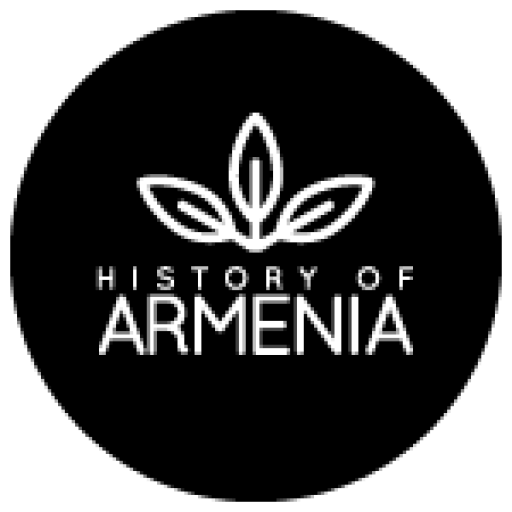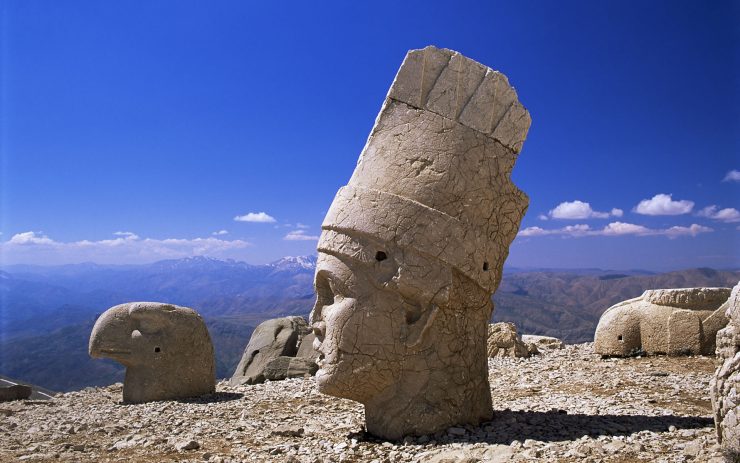The Armenian Pantheon of Gods was erected by the king of Commagene, named Antiochus I Theos c. 86 BC – 38 BC, ruled 70 BC – 38 BC. Antiochus I Theos was the son of of King Mithridates I Callinicus and Queen Laodice VII Thea of Commagene from the Armenian Orontid Dynasty.
Beyond the line connecting the cities of Seleuceia on the Euphrates, Doliche and Nicopolis, traces of Greek culture were minimal in Commagene until we reach the Roman period. Instead, the country was for a long time exposed to Armenian influence. This Armenian supremacy saw the creation of an elite with Iranian traditions, and the slow recovery of the country. The Armenian nobles eventually became independent kings, and Antiochos I was recognised as a regional power broker by the Romans and their Parthian opponents in the troublesome period following the fijinal demise of Seleucid rule.
The Orontids also known by their native name, Yervanduni (Armenian: Երվանդունիներ)), was a hereditary Armenian dynasty and the rulers of the successor state to the Iron Age kingdom of Urartu/Ararat.
The traditional Armenian tiara/crown and themes of Eagles and Lions trademark to Armenian imagery and identification.
Sources:
Chahin, Mark (2001). The Kingdom of Armenia. Routledge. pp. 190–191. ISBN 0-7007-1452-9
Toumanoff, Cyril (1963). Studies in Christian Caucasian history. Washington D.C.: Georgetown University Press. pp. 278ff.
Tiratsyan, Gevorg. «Երվանդունիներ» (Yerevanduniner). Armenian Soviet Encyclopedia. vol. iii. Yerevan: Armenian Academy of Sciences, 1977, p. 640.
Krause, Todd B. and John A.C. Greppin, and Jonathan Slocum. “The Yervanduni Dynasty.” The A. Richard Diebold Center for Indo-European Language and Culture at the University of Texas. Jan. 22, 2009.
David M. Lang (2008) [1983]. “Iran, Armenia and Georgia”. In Ehsan Yarshater. The Cambridge History of Iran Volume 3: The Seleucid, Parthian and Sasanid Periods, Part 1. Cambridge University Press. p. 510.
Michael Blömer / Religious Life of Commagene in the Late Hellenistic and Early Roman Period pp.95-129/The Letter of Mara bar Sarapion in Context. Proceedings of the Symposium Held at Utrecht University, 10–12 December 2009 /BRILL 2012

